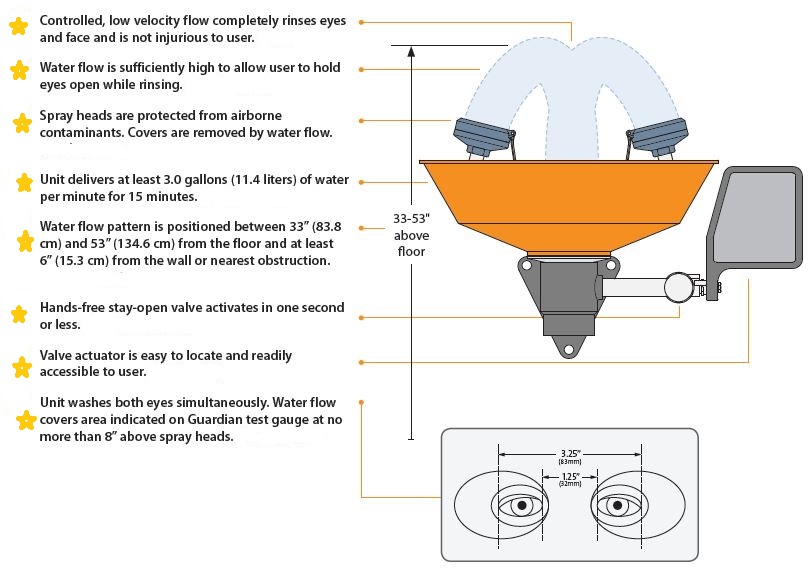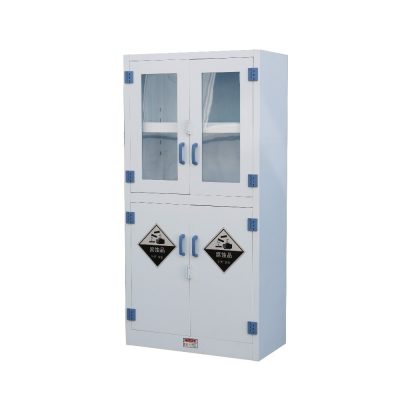Eyewash stations are located in laboratories and workshops to flush the eyes and face area if hazardous chemicals are splashed into them. In the event of hazardous chemicals splashing in the eyes, the stream of water from the spray should be directed into the eye for a period of 15 minutes before seeking medical attention.
A variety of eyewash units exist. Units are divided into installed/plumbed and portable units.
Plumbed units must have a 30-psi water supply. Flow is to be provided to both eyes simultaneously and at a velocity low enough to injury the eyes. Plumbed and self-contained units must perform as follows:
- Eyewash: 0.4 gpm for 15 minutes;
- Eye/face wash: 3 gpm for 15 minutes

Location: Install eye/face wash within 10 seconds (approximately 55 feet) of hazard, on the same level as hazard and with unobstructed travel path. Where strong acids or caustics are being handled, emergency eye/face wash should be located adjacent to the hazard, and an appropriate professional should be consulted for advice on the proper distance.
Identification: Identify eye/face wash location with highly visible sign. Area around eye/face wash shall be well-lit.
Water Temperature: Water delivered by eye/face wash shall be tepid (60-100°F).
Training: Instruct all employees in the location and proper use of emergency eye/face wash.
Maintenance/Inspection: Activate plumbed eye/face was at least weekly. Inspect all emergency eye/face wash annually for compliance with standard.
The difference between the eye and eye/face wash is the size of the nozzle and spray pattern. The unit has to be installed between 33 inches and 45 inches above ground level and 6 inches away from the wall. There must be enough room to allow the eyelids to be held open with the hands while the eyes are in the flushing water stream.
Since the nozzles face upward to operate properly, dust and other contaminants could fall into the openings clogging them or providing a breeding area. Therefore, the nozzles have to be protected in such a way as to not require a separate movement to remove them when the unit is activated.





